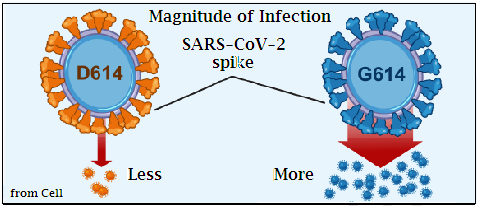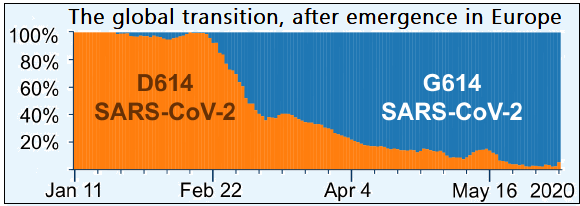The Coronavirus appears to be a moving target, says S.Ananthanarayanan.
While Covid-19 brings the world to its knees, great hope is pinned on a vaccine being found. A disturbing thought, however, is that the virus may undergo changes and slip out of the net the vaccine throws around it.
The journal, Cell1,, carries a paper by scientists from Duke University, North Carolina, Los Alamos National Laboratory, New Mexico, La Jolla Institute in California and the University and institutes in Sheffield, UK, which reports that there has been a positive shift in the form of SARS-CoV2, the virus that causes Covid-19, since the early months of the outbreak. Much of the work of developing vaccines or testing methods are based on the envelope, or outer features, of the initial, Wuhan virus, the paper says. Changes in the virus in the course of its spread worldwide could hence affect the utility of interventions which are based on how the body reacts to the exterior, physical features of the virus.
The researchers, on behalf of the Sheffield Covid-19 Genomic Group have hence developed a bioinformatics based system to monitor evolution of the virus over time, an “early warning” strategy to assess and improve therapy and testing, to keep up with changes in the virus.
The proliferation of a virus depends on the virus being able to enter living cells, so that they use the cells’ resources to multiply. The external features of the virus, which enable its entry, are thus maintained, in the course of virus multiplication, as new viruses that lack these features would not be able to propagate. At the same time, the body’s defense against a virus is also designed according to the features of the virus exterior. Chance variations in the surface, which do not affect the virus’ ability to infect cells, could hence help the virus evade body defenses. Viruses that have these variations would then survive the defenses and emerge as a new, dominant strain.
Coronaviruses, which cause the common cold, or influenza, are known to undergo these changes. This is what explains the persistence of colds among humans, and the need for a new influenza vaccine every few years. While the coronaviruses that caused SARS or MERS did not last long, the high infectivity and spread of SARS-CoV2 makes it likely to grow and thrive in new forms.
The early-warning method of the Sheffield group makes use of the database of the Global Initiative for Sharing All Influenza Data (GISAID), a collaboration of laboratories that sample and analyse the SARS-CoV2 virus, worldwide.
Based on GISAID data, the first significant change the group discovered was a change in a specific part of the genetic sequence associated with a feature, the D614 Spike of the original virus. The Spike was found changed to D614G, referred to at the ‘G glade’, as opposed to the ‘D glade’. The G variety first appeared in the March 2020, and was “rare globally,” at the time. But it rapidly multiplied and now dominates the SARS-CoV2 population
The human body defenses, fortunately, are as effective against the ‘G’ variety of the virus as against the D variety, perhaps more effective, the paper says. The disease it causes is also not more severe that that of the ‘D’ variety. The ‘G’ variety, however, multiplies faster - and is hence found in more abundant titre, or concentration (also called titer). “All the more reason to use the mask,” a press release from La Jolla Institute says.

Heading

Matter with border line 1
Line 2.This is paragraph 1, yes it is...
The image will appear along the...isn't it?
This is the third paragraph that appears...
------------------------------------------------------------------------------------------ Do respond to : response@simplescience.in-------------------------------------------
